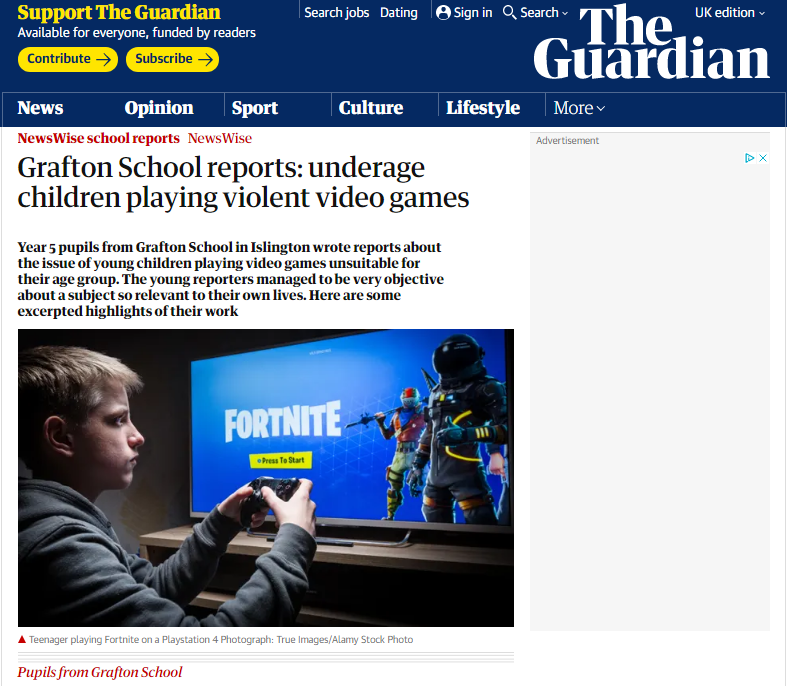
We as teachers, are seeing children absorbing information from many different sources online. As the rise of digital and social media is transforming their experience of news, they have to be able to process material from a wider variety of sources than ever before. For many, the online world is a convenient and instantaneous source of information, but they aren’t often able to assess how reliable a story is, especially with the increasing presence of advertising and algorithms which have a big influence on the content they see on their newsfeeds and search results.
It’s essential that teachers are able to give children the confidence and the skills they need to make sense of the avalanche of information available to them online and what is happening in the world around them. Introducing practical and fun ways of engaging with the news and encouraging pupils to challenge what they read and see is a great way to help them feel confident in separating fact from opinion, challenging disinformation and have their own values and opinions.
To develop pupils’ news literacy, we participated in the NewsWise programme, run in partnership with The Guardian Foundation, National Literacy Trust and PSHE Association,which provides a set of cross-curricular news literacy resources, experiences and support for schools, aimed at teaching 7 to 11-year-olds. Within this module of learning, I took away several ways of working to get the best out of our pupils.
Reflecting on how news is portrayed
Our school was lucky enough to participate in face-to-face training which gave our staff practical tips and ideas on how to make digital and critical literacy a whole-school focus, not just for my Year 5 class. Tips included: ways of getting pupils excited about the news, ways to develop their understanding of the news, promote meaningful discussions about real-life issues and use real news reports as models for writing. By asking pupils to reflect on the way news is portrayed, it teaches them to question, evaluate and think independently about the information in front of them - skills they can apply to all aspects of day to day life as well as their studies.
Having noticed that many of our pupils seemed disengaged with the news, whether that’s because they feel it’s not accessible to them or they aren’t interested, we were keen to try and re-engage them and develop their critical thinking. When we saw the diversity in the different activities and resources NewsWise had to offer, from workshops to journalist visits to the online suite of resources and lesson plans on a diverse range of topics, we thought this would be a fun way to introduce news literacy to our pupils. What’s great is the lesson plans help support our English and PSHE teaching as well as they are matched to the English and PSHE curriculum. For example, one of the lessons which explores bias helped our pupils develop their English skills of debating, comprehension and writing balanced arguments, for and against an issue. It allowed them to have open and frank discussions and analyse language used around bias in real life issues, turning to their own experiences of bias and when they may have been biased themselves. A few of the students highlighted their own sporting experiences where they’ve felt a referees decision was unfair and we looked at how that made them feel, really driving home how important it is for reporters to write news stories fairly.
The training really highlighted why it is so crucial to teach children about the news, beyond simple comprehension of articles and writing news reports. Children need to learn how to navigate what is real and what is not, how to understand fact, opinion and bias and feel that news is for them too, in order to empower them to be able to challenge, form opinions, and engage with the world around them.
